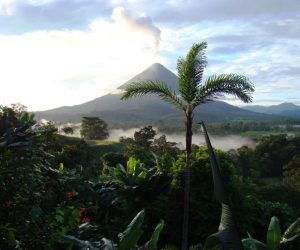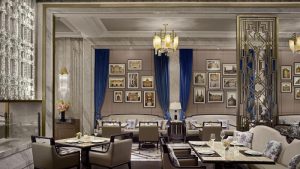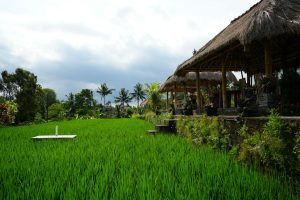Francophiles who missed traveling to Paris in 2020 received a much-needed lifeline when the Netflix series “Emily in Paris” premiered last October. A mega hit with viewers all over the globe binging until the wee hours of the night on its first weekend, “Emily in Paris” became an instant TV classic. Social media was buzzing with images of the fabulous outfits Emily wore (Patricia Field, who designed the costumes for “Sex and the City,” also did the costumes for “Emily in Paris”) and the dreamy locations where the show was filmed.
The storyline of the show follows Emily Cooper, played by the beautiful Lily Collins, a bright-eyed, ambitious Millennial. Emily is a junior executive at a marketing company in Chicago and at a moment’s notice is suddenly whisked away to Paris for a new job with her firm. Having never been to Paris before and not speaking a word of French, Emily has to fend for herself without knowing a soul. The remainder of the nine episodes is an amusing romp about how Emily maneuvers the French customs, social protocols, codes of conduct, the rules about dating French men, office politics, and the complicated cultural differences.
One of the main attributes of “Emily in Paris” and also the second star of the show after Lily Collins, is the city of Paris. Not since the 2011 Woody Allen film “Midnight in Paris,” has the city been so gloriously filmed. The exteriors of “Emily in Paris” were entirely shot on location. Although there are many familiar sites in the show, there are a number of more obscure and off the beaten path places that are not as recognizable.
We have put together a list of the key locations of the show with some history, fun facts, and trivia.
Place de l’Estrapade
In the first episode when Emily arrives in Paris, she meets the handsome concierge who escorts her up to her new apartment, a six-floor walkup with no elevator. The top floor apartment is what is called a chambre de bonne, a tiny room which was used for servants to sleep in when the buildings were first constructed. Taking a bit of artistic license, the show gave Emily a full kitchen, rather than a hot plate and mini-refrigerator usually found in an authentic chambre de bonne, which measures about 150 square feet.
The apartment building, Maison Moreau was built in 1776 and is situated on Place de l’Estrapade, a garden square with a fountain in the Latin Quarter on the Left Bank/Rive Gauche.
La Boulangerie Moderne
After Emily checks into her apartment, we find her at La Boulangerie Moderne, a real-life bakery a few doors away, tasting her first pain au chocolat. The secret behind why the pastries and breads are so good in France, is because in order to be called a boulangerie in France, by law, everything must be baked on the premises. Bread, croissants and other pastries are continually baked all day and every few hours, so the products are always fresh.
Place de Valois
Emily’s office is tucked away on Place de Valois, near the Louvre, which is a clandestine courtyard lined with handsome limestone buildings. It was constructed in 1790, and named after the Duke de Valois, who lived in the Palais Royal, just across the street.
A number of the key scenes in “Emily in Paris” were filmed in the Palais Royal, including her first encounter with Mindy, who sings “La Vie en Rose” to bystanders.
The Palais Royal was originally named the Palais de Cardinal and was built between 1633 and 1639 as the residence of Cardinal Richelieu. Richelieu died in 1642, only three years after it was completed. The next inhabitant was King Louis XIII and future generations of French royalty, including King Louis XIV, Queen Anne of Austria, and Philippe d’Orléans, who lived in the palace until 1793.
Emily and Mindy become fast friends when they meet in one of the city’s beautiful parks. // Photo: Carole Bethuel/Netflix
In 1784, the Palais Royal was transformed into the first shopping arcade and entertainment complex in Paris with 145 store fronts with clothing and design boutiques, restaurants and cafés, galleries, and theaters. The Palais Royal became a major tourist attraction for Parisians and Europeans. Plans to launch the French Revolution were secretly made at a café in the Palais Royal, and on July 14, 1789 the revolutionaries symbolically stormed the Bastille prison.
On the northern side of the Palais Royal is the historic restaurant, Le Grand Véfour, where Emily, in an effort to impress her boss and an important client, thinks she snagged a last-minute reservation, only to be told she switched the day with the month, making the reservation for months later. Opened in 1784, Le Grand Véfour is one of the most beautiful restaurants in Paris and is owned by Chef Guy Martin. It has two Michelin stars.
Place Trocadéro
When Emily is invited to her first swanky event, she shows up in a sexy, black strapless dress. At one point we see her dreamy eyed, viewing the Eiffel Tower when it sparkles. The location is Café de l’Homme, which is inside the Musée de l’Homme, the museum of evolution and mankind.
The museum is part of Palais de Chaillot, a cultural complex built in 1937, which has a spot-on view of the Eiffel Tower.
La Maison Rose
The scene before Emily embarks on her wild and troublesome night out with her friend Mindy, she has dinner at La Maison Rose, a Montmartre landmark. The adorable Maison Rose/pink house was opened in 1909, and local painter Maurice Utrillo captured it in a 1916 painting.
Just down the street from La Maison Rose is where Emily stages her social media stunt by lounging in a bed outdoors, which is on the rue de l’Abreuvoir and has frequently been named one of the most beautiful streets in Paris.
Pont Alexandre III
After Emily arrives at the location for a commercial shooting for a new perfume, she is a bit squeamish when she encounters a model strolling across the bridge wearing nothing but a pair of heels.
The above scene takes place on Pont Alexander III, one of the most lavish of the 37 bridges crossing the Seine River, which divides Paris into the Rive Gauche/Left Bank and Rive Droite/ Right Bank. Constructed between 1896 and 1900, it was named after Tsar Alexandre III from Russia, who was responsible for negotiating the Franco Russian Alliance in 1892. The crystal lamps, cherubs and gold nymphs, exemplify the Beaux Arts design, which was popular at the turn of the century. The four, 56-foot-high columns are topped with gilt bronze sculptures and reference the arts, the sciences, commerce, and industry.
Author Richard Nahem has designed a live, three-hour private “Emily in Paris” Tour where he takes clients to all the locations above. Visit eyepreferparistours.com.
Related Articles
Champs-Elysées: The Parisian Promenade
Strolling Córdoba’s Back Streets
Les Ho?tels d’en Haut Acquires Three Hotels in Luberon, France
The Cinque Terre: Italy’s Riviera






